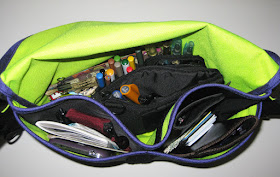 |
| 11/30/15 colored pencils (rear end of 12,000-year-old giant ground sloth) |
The Burke Museum
is one of my favorite winter sketching locations. Our thermometer read 30 F degrees this morning, and that’s plenty wintry for me. The Burke was an ideal
place to meet up with Laurie from the Bay Area, who is visiting Seattle this
week. (I met Laurie when I sketched with Urban Sketchers SF Bay Area a few months ago.)
Although I’ve sketched most of the Burke’s large skeletons by now, the one I’ve been missing is the
12,000-year-old giant ground sloth, which was discovered in 1961 during
construction of Sea-Tac Airport. I’ve considered it several times, but it’s
difficult to get a good angle on the whole skeleton in the relatively narrow
space where the sloth is exhibited. Today I decided I would get behind the
sloth, one way or another.
 |
| 11/30/15 colored pencils (Iatmul mask) |
Next I went downstairs to the human history area. Because I’m
usually so completely engrossed in animal skeletons, I rarely even make it
downstairs at the Burke, but there are lots of fascinating human artifacts to
sketch. Today I focused on an Iatmul dance/clan mask of Papua New Guinea, which
has interesting fibrous textures that were fun to capture with colored pencils.
With only five minutes left before the sharing time, I went
straight to my all-time Burke favorite: the “Terror Bird” of Brazil! I seem to
sketch that scary guy nearly every time I visit. (Once again, my Zebra double tip brush pen served me
well in getting the big bird done in a couple of minutes flat.)
Most of us went to lunch later at the University Book Store
(with art supply shopping there afterwards, of course), and Michele was the
only one who had the patience to sketch her food before eating. (If you’re
sketching, you’re at risk of being sketched yourself. J)
Thanks for joining us, Laurie!
 |
| 11/30/15 Zebra brush pen, colored pencils (Terror Bird of Brazil) |
 |
| 11/30/15 Zebra brush pen (Michele sketching) |
 |
| Thanks for joining us, Laurie! (back row, second from right) |


















































